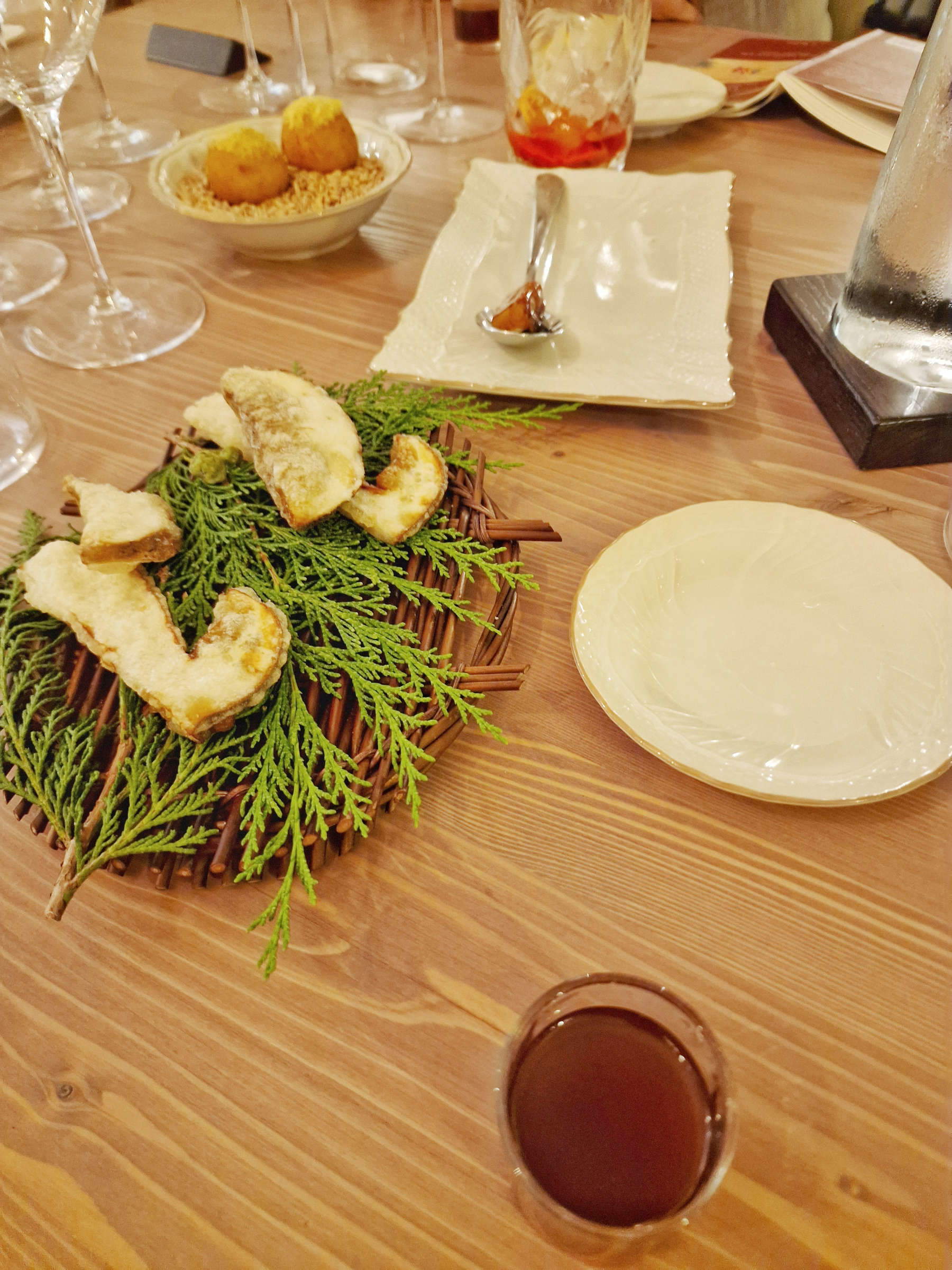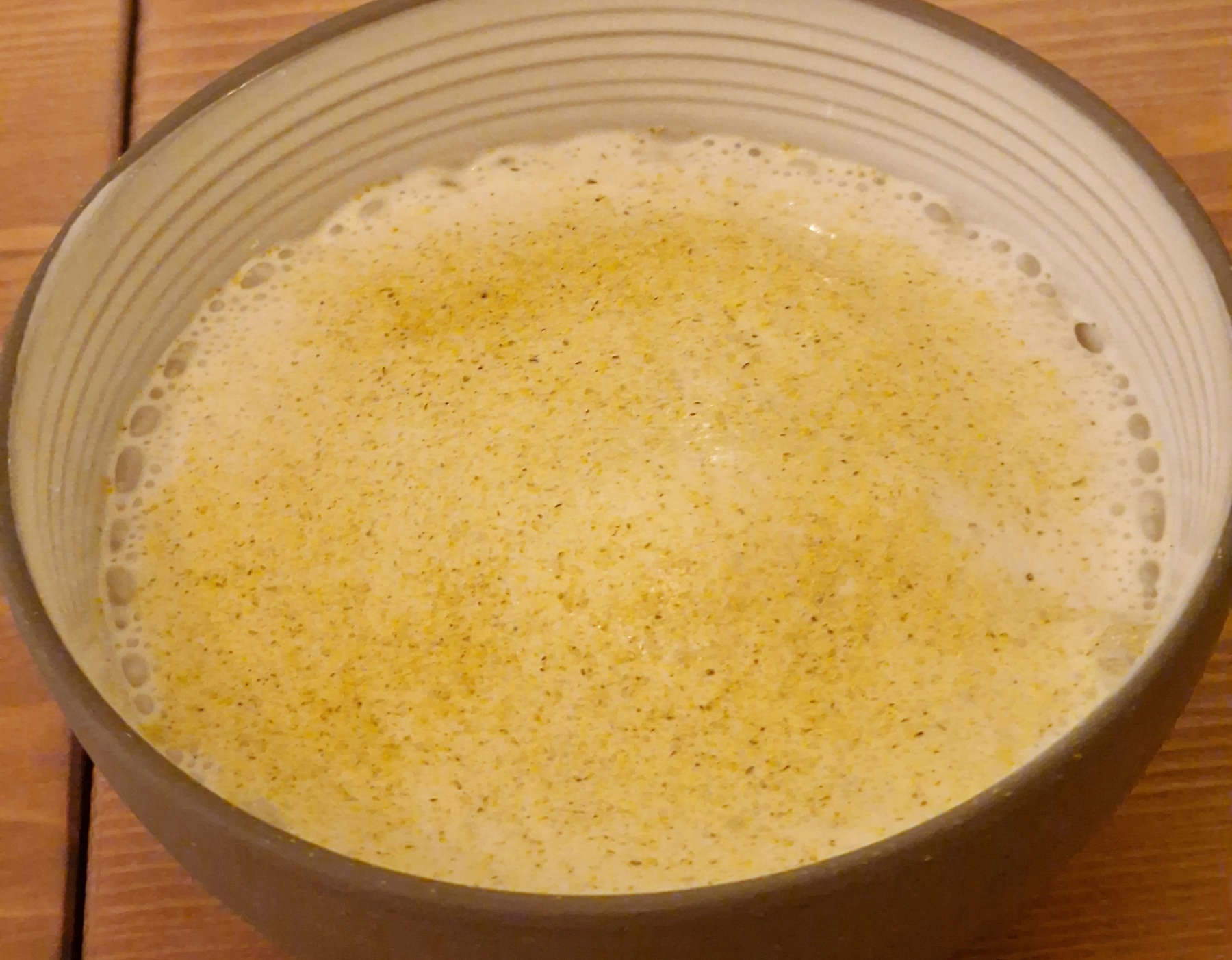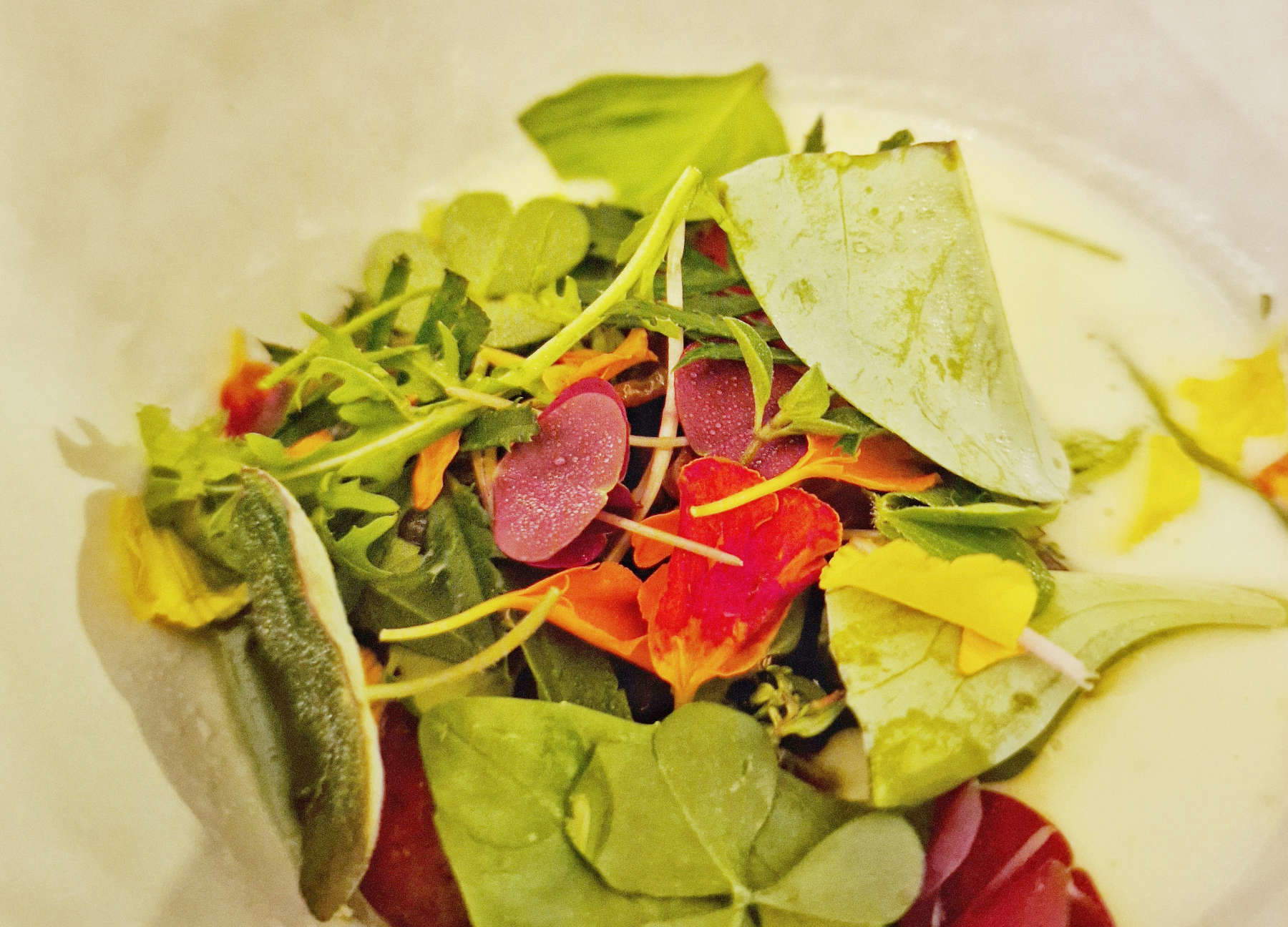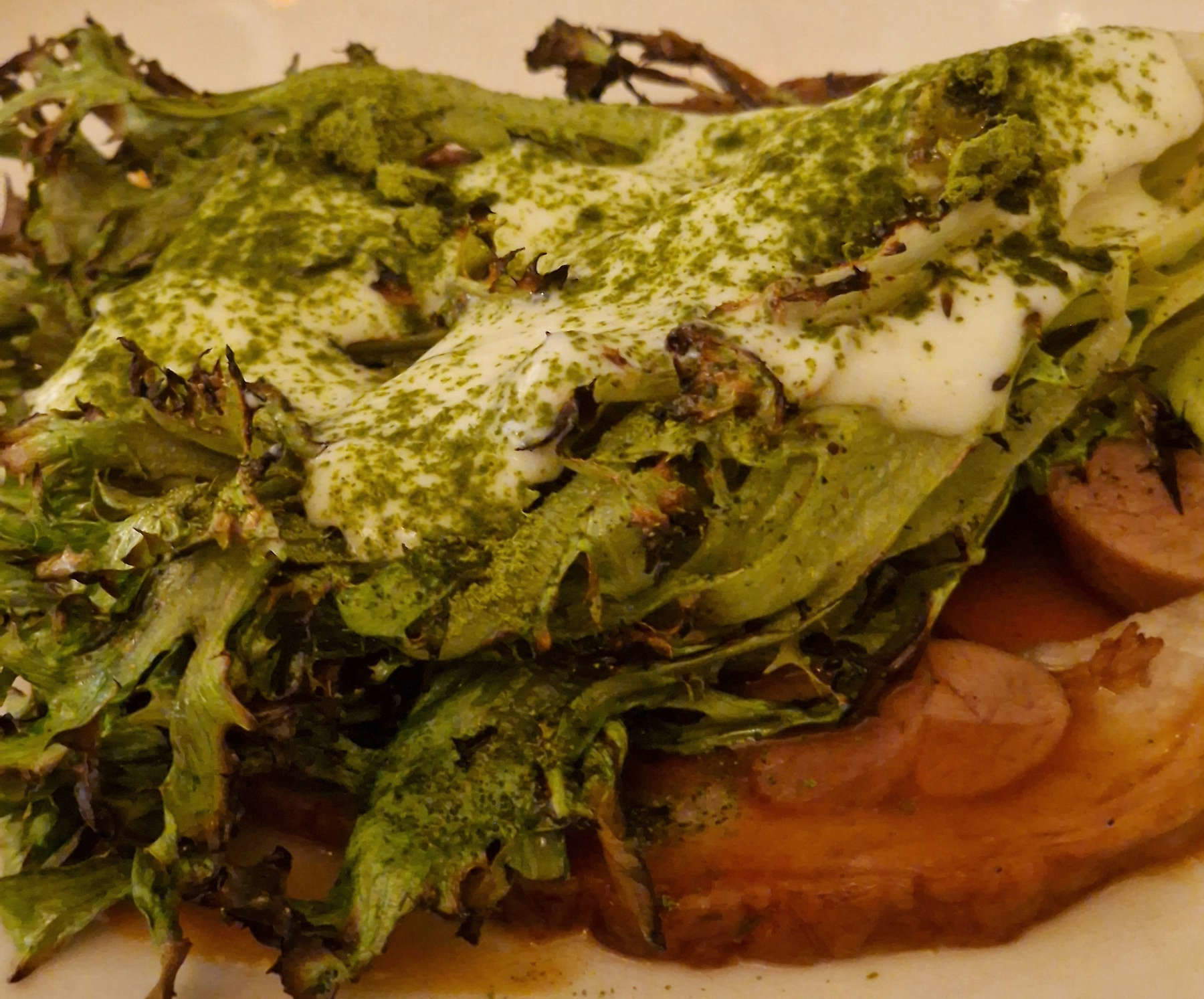From August 29-31 in theRomagna Apennines, the Festival of Recovery Times was held. The only event in Italy focused on circular cooking, integral use of raw materials and awareness. A conceptual and artistic attitude even before that in giving food form and taste. According to the United Nations, about a third of the world’s food production is lost between the stages of distribution and consumption.
As part of the festival, I participated in a five-hands dinner that was hosted at the Michelin-starred DaGorini restaurant in San Piero in Bagno. Three chefs engaged: Gianluca Gorini (DaGorini), Valerio Serino (Terra, Copenhagen), Fabio Ingalliera (Il Nazionale, Vernante, Cuneo), gelato maker Cinzia Otri (Gelateria della Passera, Florence) and bartender Michele Di Carlo. The theme of the dinner was “Forest” and in every dish, from appetizers to wines (Foradori, Tenuta San Marcello and Menta e Rosmarino), the challenge of using raw materials without waste and in the most sincere and conscious way possible. Haute cuisine that is no longer white gloves, prestige and exclusivity, but attention, intelligence in combining raw materials and access. Interestingly, this is the same change that is also happening in contemporary art: old models of exclusivity and speculation are slowly giving way to more sustainable, conscious and “humane” models.
In both art and cuisine there is a perceived need to "go back to the earth," to interrupt at least for a few hours the digital intoxication and the tam tam of instability and wars coming from the world. While contemporary artists seem to remain stranded in the citationist fascinations of the past, the conviviality of the meal seems a dimension more likely to address the narrow contemporary.




Dinner begins with a seasonal salad and green gazpacho, where herbs, fruits and spices converge on the plate in a fresh and different explosion at every moment. Then, under a froth of almond and nepetella, we find woodland mushrooms and apricot used integrally, even with its stone. The dish is searched as if underground, not looking for the “wow” effect but for the flavors and pampering of the forest. It continues with rose hip risotto, nutmeg and roe deer resting on rice. From northern atmospheres then come chestnut passatelli in eel and citrus broth. Then a frozen ice cream of pollen, lavender and mountain pine. To finish sheep, grilled salad and sour curd. And finally desserts, a very good latte with hints of lavender and flowers, and then Amaroc sorbet.
As in visiting a museum or art exhibition, the “fine dining” dinner becomes an artistic experience but, in this “conscious” guise, it warms up and becomes as accessible as a nature walk. As in contemporary art to appreciate the walk we must train and educate taste, train “new eyes,” understood as renewed sensitivity to the world around us.
The occasion of the Festival provides this space for “planting” and awareness to review and reevaluate our habits, both food and those related to our consumerist needs. Food becomes a metaphor for everything else and succeeds in affecting that dimension where art struggles most and risks remaining merely a sterile accessory for interior decoration. What is evident is how the chef, in experiences such as these, retains a centrality of his own in which he thinks, prepares, and directs, while the contemporary artist has lost all centrality in favor of “quality juries” that are not purely “artistic,” such as the art curator, gallery owner, collector, and museum director. The artist, after the role re-definitions of the twentieth century, can also be a chef and must necessarily recover his centrality, that is, those “means of production” that are not brushes and stoves, but places and public relations to reach the public. Here it is that in this way it is possible to organize places and spaces of conviviality where to experiment and refine new eyes, new awareness and a new sensitivity to everything.
Warning: the translation into English of the original Italian article was created using automatic tools. We undertake to review all articles, but we do not guarantee the total absence of inaccuracies in the translation due to the program. You can find the original by clicking on the ITA button. If you find any mistake,please contact us.